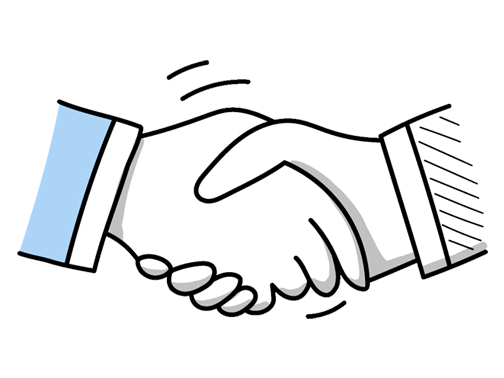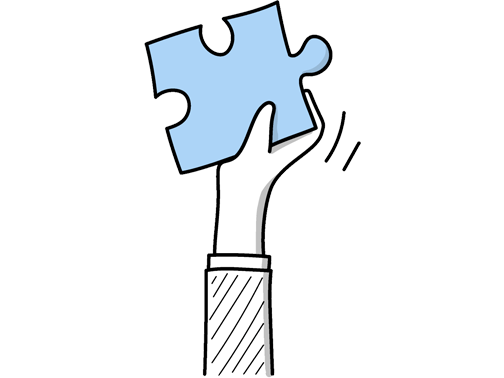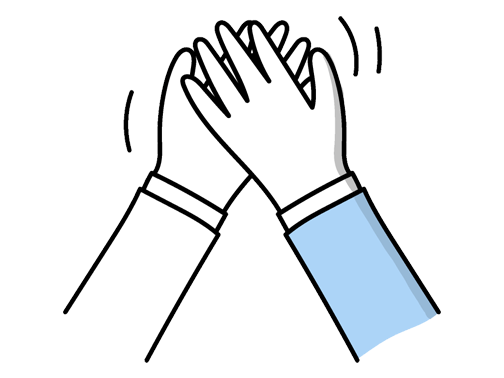Assembly Line Operator Interview Questions (2025 Guide)
Find out common Assembly Line Operator questions, how to answer, and tips for your next job interview
Practice Interviews Online - Identify your strengths and weakness in a realistic Assembly Line Operator mock interview, under 10 minutes
Practice Now »Assembly Line Operator Interview Questions
This interview question helps the employer assess your hands-on skills and familiarity with the equipment key to the role. You need to clearly explain the types of machinery you've operated and highlight your ability to maintain safety and efficiency while using them.
Example: In my previous role, I regularly operated various assembly line machines, ensuring they ran smoothly and efficiently. I’m comfortable with monitoring equipment, making minor adjustments, and quickly addressing any issues to minimize downtime. For example, I’ve worked with conveyor systems and packaging machines, always prioritizing safety and quality to keep production on track.
This interview question is designed to see how you apply your skills and work efficiently in a team setting. You need to briefly describe a specific project, your role in it, and the positive outcome or improvement it achieved.
Example: In my last role, I helped improve the efficiency of a small team assembling electronic components. We identified a bottleneck at a testing stage and suggested rearranging the workstation layout. This adjustment reduced errors and sped up the process by about 15%, helping us meet tighter deadlines without compromising quality. It was rewarding to see how a simple change could make a real difference on the line.
What they want to know is how you ensure new employees learn the job efficiently and accurately. You should say you used clear, step-by-step instructions and adapted your teaching style to fit each trainee’s learning pace.
Example: Yes, I have trained new team members on the assembly line. I usually start by demonstrating each step clearly, then guide them hands-on while encouraging questions. I pay attention to how they learn best—some prefer watching closely, others jump right in—so I adjust accordingly. Keeping communication open and patient helps build their confidence and ensures they understand the process thoroughly.
Questions like this assess your ability to maintain high standards and prevent errors that could impact the final product. You need to say that you strictly follow procedures, perform regular inspections, and stay focused to ensure every step meets quality requirements.
Example: I make sure to stick closely to the guidelines we have for each task and regularly check my work to catch any mistakes early. Staying focused is key, so I avoid distractions and take short breaks when needed to keep my attention sharp. For example, when assembling components, I double-check alignment before moving on to avoid errors down the line. This approach helps me maintain consistent quality throughout my shift.
What they want to understand is if you prioritize safety and follow protocols to prevent injuries. You need to say that PPE protects you from hazards and helps maintain a safe work environment.
Example: Personal protective equipment is essential in keeping me safe from potential hazards on the assembly line, like sharp tools or moving parts. Wearing gloves, safety glasses, or ear protection helps prevent injuries and keeps the workflow smooth. It’s about being careful not just for myself but for everyone around me, so we all go home safe at the end of the day.
Interviewers ask this question to ensure you prioritize safety and understand the specific protocols needed to prevent accidents on the assembly line. You should mention wearing proper PPE, routinely inspecting equipment for issues, and working closely with your team to maintain a safe environment.
Example: When working on an assembly line, I always stay alert to any potential hazards and make sure to follow all safety guidelines, like wearing protective gear and keeping workstations clear. If I notice something unsafe, I speak up immediately and encourage my team to do the same, since good communication helps prevent accidents. For example, in my last role, noticing a slippery floor early helped us avoid a possible injury.
Hiring managers ask this to see if you can maintain teamwork and keep the production process smooth despite disagreements. You need to say that you stay calm, listen to your coworker’s perspective, and work together to find a solution quickly.
Example: When disagreements come up on the line, I stay calm and listen to everyone’s point of view. It’s important to focus on the task, not the argument. Once, a team member and I disagreed on a step, so we talked it through quickly and found a way that worked for both of us. Keeping communication open helps us keep things moving smoothly and avoid mistakes.
Hiring managers ask this question to see if you prioritize safety and follow proper procedures in a potentially hazardous environment. You need to explain that you consistently follow safety protocols, stay aware of your surroundings, and communicate effectively with coworkers to prevent accidents.
Example: To keep everyone safe, I stay alert and follow all safety guidelines closely. I make sure my workspace is tidy to prevent any accidents and always wear the correct protective gear. If I notice something unsafe, I speak up right away. For example, once I spotted a loose tool on the line and reported it before anyone got hurt, which helped avoid a potential injury.
What they want to know is if you can communicate clearly to avoid errors and keep the line running smoothly. You need to say you listen carefully, speak clearly, and confirm instructions to make sure everyone is on the same page.
Example: I make sure to stay attentive and approachable, encouraging open dialogue throughout the shift. For example, if I notice a change in the process or a potential issue, I quickly share it with my teammates to keep everyone on the same page. Clear, respectful communication helps us work efficiently and avoid mistakes, which is key when you’re moving at pace on the line.
Hiring managers ask this question to understand the variety and relevance of your experience in different work environments. You need to clearly state the industries you’ve worked in, like automotive or electronics, and briefly explain how that experience has equipped you with skills such as managing high-volume production or maintaining quality under pressure.
Example: I’ve worked in both automotive and consumer electronics assembly lines, which taught me the importance of precision and consistency. In automotive, attention to detail was crucial for safety standards, while electronics demanded careful handling of small components. These experiences have strengthened my ability to maintain focus and work efficiently in fast-paced environments, skills I’m confident will help me contribute effectively here.
What they want to know is how you work with others and help the team succeed. You should say that you communicate clearly, support teammates when needed, and reliably complete your tasks to keep the assembly line running smoothly.
Example: In a team, I focus on clear communication to keep everyone on the same page and make sure tasks run smoothly. I’m always ready to help out where needed, whether it’s covering a step or sharing tips. Being dependable is important to me—I make sure my part is done right and on time, so the whole line can keep moving efficiently without any hold-ups.
Hiring managers ask this to see how you approach problems and whether you use the right tools and methods to fix them. You need to say you start by consulting manuals or guides, then follow a step-by-step process to find the issue, and are open to learning new skills or asking for help when needed.
Example: When I encounter technical issues, I start by checking manuals or standard operating procedures, then observe the machine closely to pinpoint the problem. If needed, I consult more experienced colleagues or use online resources to gather insights. I find breaking the problem down into smaller parts helps, and I’m always open to trying new techniques to fix things efficiently and keep the line running smoothly.
This interview question helps the employer assess your familiarity and skill level with assembly line work. You need to clearly state the number of years you have worked on an assembly line and briefly mention any relevant tasks or responsibilities you handled.
Example: I’ve spent around three years working on assembly lines in different settings, from electronics to automotive parts. During that time, I’ve developed a strong attention to detail and learned how to maintain a steady pace without sacrificing quality. For example, in my last role, I helped reduce errors by double-checking each component before it moved to the next stage, which improved overall efficiency.
Questions like this assess your problem-solving skills and ability to act quickly to maintain productivity and safety. You need to clearly explain the issue you noticed, the steps you took to fix it, and the positive outcome of your actions.
Example: During a previous role, I noticed a recurring delay caused by a misaligned component on the conveyor. I flagged it to my supervisor and suggested adjusting the positioning slightly to ensure smooth flow. After we tried this, the line ran more efficiently, reducing stoppages. It was satisfying to see how a small change could improve overall productivity without disrupting the process.
This interview question aims to assess how you manage communication and teamwork to maintain efficiency on the assembly line. You need to say that you communicate clearly through regular briefings, coordinate tasks by checking in with teammates, and offer support when needed to keep everyone aligned and the work flowing smoothly.
Example: To make sure everyone knows what they need to do, I start by having a quick chat with the team to clarify who’s responsible for each task. I keep communication open, so if anyone’s unsure or needs help, they feel comfortable speaking up. For example, on my last line, we held brief check-ins that kept things running smoothly and avoided any confusion or overlap.
What they want to know is how you approach solving problems methodically and communicate effectively during machine malfunctions. You need to explain how you identify the root cause by checking error codes, describe the steps you take like restarting the machine, and mention informing your supervisor about the issue and the resolution.
Example: Sure. When a machine isn’t working properly, I start by observing the issue and gathering information to understand what’s wrong. Then I check the components step-by-step, like looking for jams or electrical faults. Once I find the problem, I fix it or alert the maintenance team if needed. Afterward, I log the issue clearly to keep the team informed and help prevent future breakdowns.
This interview question helps the employer understand your hands-on experience and ability to work efficiently with specific tools and machinery. You need to mention the key tools and equipment you have used, emphasizing your familiarity and comfort operating them safely and effectively.
Example: I’ve worked with a variety of hand tools like screwdrivers and torque wrenches, as well as power tools including drills and pneumatic drivers. I’m comfortable using measuring devices such as calipers to ensure precision. In previous roles, I also operated conveyor systems and simple diagnostic equipment to maintain workflow and quality on the line. I find that being familiar with these tools helps keep the process smooth and efficient.
This question helps the interviewer understand your awareness of workplace safety and your proactive attitude toward preventing accidents. In your answer, clearly describe the hazard you noticed and explain the specific steps you took to report or fix the issue to keep everyone safe.
Example: At my previous job, I noticed a spill on the floor that could have caused someone to slip. I quickly alerted my supervisor and helped clean the area while putting up a warning sign. This small action helped prevent any accidents that day and reminded the team to stay vigilant about safety on the line.
Interviewers ask this question to see if you can collaborate effectively under pressure and contribute to meeting goals. You need to explain a specific situation where you worked with others, describe your role, and show how your teamwork helped meet the deadline.
Example: In my previous role, our team faced a tight deadline to complete a batch of products before a shipment. We coordinated closely, supporting each other by sharing tasks and double-checking quality. By staying focused and communicating openly, we finished on time without compromising standards. It was rewarding to see how teamwork made a real difference under pressure.
Hiring managers ask this to see if you understand the importance of keeping machinery in good condition to prevent breakdowns and ensure safety. You need to explain how you perform routine inspections, identify and report any issues, and carry out basic maintenance like cleaning and lubricating parts regularly.
Example: I make sure to check the machinery regularly, keeping it clean and free from debris to prevent any build-up that might cause problems. If I notice anything unusual, like strange noises or leaks, I report it straight away to avoid downtime. I’m comfortable handling simple upkeep tasks, like lubrication and adjusting parts, which helps the equipment run smoothly and keeps the line moving efficiently.
Employers ask this to see how you handle problems quickly and keep production running smoothly. You need to say that you first identify the issue accurately, then inform your team or supervisor right away, and finally take or suggest steps to fix the problem efficiently.
Example: If I notice something off during production, I quickly try to understand what’s causing it and how it might affect the process. Then, I let my teammates or supervisor know what’s happening so we’re all on the same page. If I have a practical idea to fix it right away, I suggest it, but I’m always ready to support whatever’s best to keep things running smoothly and safely.
This interview question helps the employer understand how you handle pressure and solve problems in a fast-paced assembly line environment. In your answer, describe a specific challenge you faced, explain how you worked with your team to resolve it, and share the positive results or lessons learned.
Example: In my previous assembly role, keeping up with fluctuating production speeds was tough. When the line sped up unexpectedly, I focused on staying calm and prioritizing accuracy over speed to avoid errors. By communicating closely with my team, we adjusted our pacing together. This taught me how staying composed and working as a unit helps maintain quality, even under pressure.
Interviewers ask this to see how you manage pressure and stay organized when faced with several problems at once. You need to explain that you assess which issues impact production the most and address those first, while communicating clearly to keep the team informed.
Example: When several issues come up at once, I quickly assess which one impacts the production line most. For example, if a machine stops, I focus there first to minimize downtime. At the same time, I communicate with the team to keep things moving smoothly. Staying calm and organized helps me manage tasks effectively without getting overwhelmed.
This question checks if you take safety seriously and stay informed to protect yourself and your team. You should say that you regularly check official safety updates and attend trainings, then explain how you strictly follow new guidelines in your daily work to ensure compliance and prevent accidents.
Example: I make it a point to regularly review any updates from our company newsletters or safety briefings, and I’m always attentive during team meetings where new guidelines are discussed. When changes arise, I immediately adjust my work habits to stay in line with the rules, ensuring both my safety and my coworkers’. Staying informed isn’t just about rules—it’s about taking responsibility for everyone’s well-being on the line.
This interview question is asked to see how well you handle unexpected issues and think on your feet in a fast-paced work environment. You need to briefly describe a specific problem you faced, explain the quick actions you took to fix it, and mention the positive result of your solution.
Example: Sure! Here’s a concise, natural-sounding answer:
Once, a machine on the line suddenly jammed, threatening to halt production. I quickly stopped the equipment and identified a misaligned part causing the blockage. By adjusting the component and clearing the jam, I got the line moving again with minimal delay. This quick action prevented downtime and kept the team on schedule.
Ace your next Assembly Line Operator interview with even more questions and answers
Common Interview Questions To Expect
The interviewer is looking for a brief overview of your background, experience, skills, and career goals. Focus on relevant information related to the job and company.
Example: I have been working as an Assembly Line Operator for the past 5 years, with experience in various manufacturing environments. I am skilled in operating machinery, following safety protocols, and meeting production targets. I am excited about the opportunity to contribute to your team and continue to grow in my career.
The interviewer is looking for your motivation, passion, and understanding of the role. You can answer by discussing your skills, experience, interest in the industry, or company values.
Example: I have always been interested in manufacturing and production processes, and I believe that working as an Assembly Line Operator will allow me to utilize my attention to detail and problem-solving skills. I am excited about the opportunity to contribute to the efficient production of high-quality products for this company. I am motivated by the fast-paced environment and the opportunity to continuously improve my skills in this role.
The interviewer is looking for insight into your long-term aspirations and how they align with the company's goals. Be honest, specific, and show ambition.
Example: My career goal is to continue developing my skills as an assembly line operator and eventually move into a supervisory role. I am eager to take on more responsibilities and contribute to the success of the company. Ultimately, I hope to become a valuable asset to the team and help drive efficiency and quality in our production process.
The interviewer is looking for honesty, self-awareness, and a clear explanation of the reasons behind the career change. Possible answers could include seeking new challenges, better opportunities, or a change in personal interests.
Example: I decided to change career paths because I was looking for new challenges and opportunities to grow. I felt like I had reached a plateau in my previous job and wanted to explore something different. Ultimately, I wanted to pursue a career that aligned more with my personal interests and goals.
The interviewer is looking for your commitment to improving your skills and knowledge in your field. You can answer by mentioning courses, certifications, workshops, or any other relevant activities you plan to pursue.
Example: I plan to take some courses on advanced machinery operation to enhance my skills on the assembly line. I also want to get certified in health and safety to ensure a safe work environment for myself and my colleagues. Additionally, I am considering attending workshops on lean manufacturing to improve efficiency in our production process.
Company Research Tips
The company's official website is a goldmine of information. Look for details about the company's history, mission, vision, and values. Pay special attention to any information about the company's production process, as this will be directly relevant to the Assembly Line Operator role. Also, check if they have a news or blog section where they might share updates about new products, initiatives, or industry trends.
Tip: Don't just skim through the website. Take notes and think about how the information you find relates to the role you're applying for.
Social media platforms can provide a more informal view of the company. Check their LinkedIn, Twitter, Facebook, and Instagram accounts. Look for any recent updates, how they interact with their audience, and what kind of content they share. This can give you a sense of the company's culture and priorities. For an Assembly Line Operator role, look for any posts related to their manufacturing process or team.
Tip: Look at the comments on their posts to see what customers and employees are saying. This can give you additional insights into the company.
Understanding the industry can help you understand the company. Look for news articles, reports, and trends related to the manufacturing industry in the UK. This can give you a sense of the challenges and opportunities the company might be facing. For an Assembly Line Operator role, understanding the industry can help you speak knowledgeably about the work and show that you're engaged with your profession.
Tip: Try to find industry-specific publications or websites for the most relevant information. Google News can be a good starting point.
Websites like Glassdoor can provide insights into what it's like to work at the company from the employees' perspective. Look for reviews from people who have held the same or similar roles to the one you're applying for. This can give you a sense of the work environment, management style, and potential challenges or benefits of the role.
Tip: Remember that reviews can be subjective and may not represent everyone's experience. Look for common themes rather than focusing on individual reviews.
What to wear to an Assembly Line Operator interview
- Clean, pressed trousers or jeans
- Comfortable, closed-toe shoes
- A neat, collared shirt or polo
- Avoid flashy or distracting jewelry
- Light makeup and neat hairstyle
- Carry a neat folder with documents
- Avoid strong perfumes or colognes
- Ensure clothes are free from stains





